

Camper-vans
Travelling by camper-van opens up Japan in a way no train or hotel itinerary can. You set the pace: pull off the expressway and into mountain passes, sleep beside a volcanic lake, or park within earshot of the Pacific surf. With compact but comfortable vans, you have both mobility and freedom — perfect for exploring regions that most visitors miss.
Japan is unusually well suited to camper-van travel. Thousands of roadside stations (michi-no-eki) offer safe overnight stops, and campsites across the country provide hot springs, showers, and cooking facilities. Distances between regions are shorter than you might think, so in a single week you can move from cedar forests in Nagano to the beaches of Wakayama or from volcanic Kyūshū to the coastal roads of Shikoku.
For British travellers, driving in Japan feels straightforward. Vehicles keep to the left, just as in the UK, and most camper-vans are automatic. Roads are exceptionally well maintained, and signage is increasingly bilingual. To hire and drive a camper-van, you will need to bring your UK licence together with an International Driving Permit (IDP) issued under the 1949 Geneva Convention, available from the Post Office. You must also carry your passport while driving.
Which Van to Choose
The Sakura: It’s the right choice if you want something simple to drive, compact, easy to park in small towns, and light enough to handle the winding roads of the Japanese Alps or the tight lanes of traditional villages. Inside, it feels cosy and efficient: a snug sleeping space, clever storage, and everything you need to be self-sufficient. Couples who plan shorter journeys, or who simply value manoeuvrability above all else, will find it ideal.
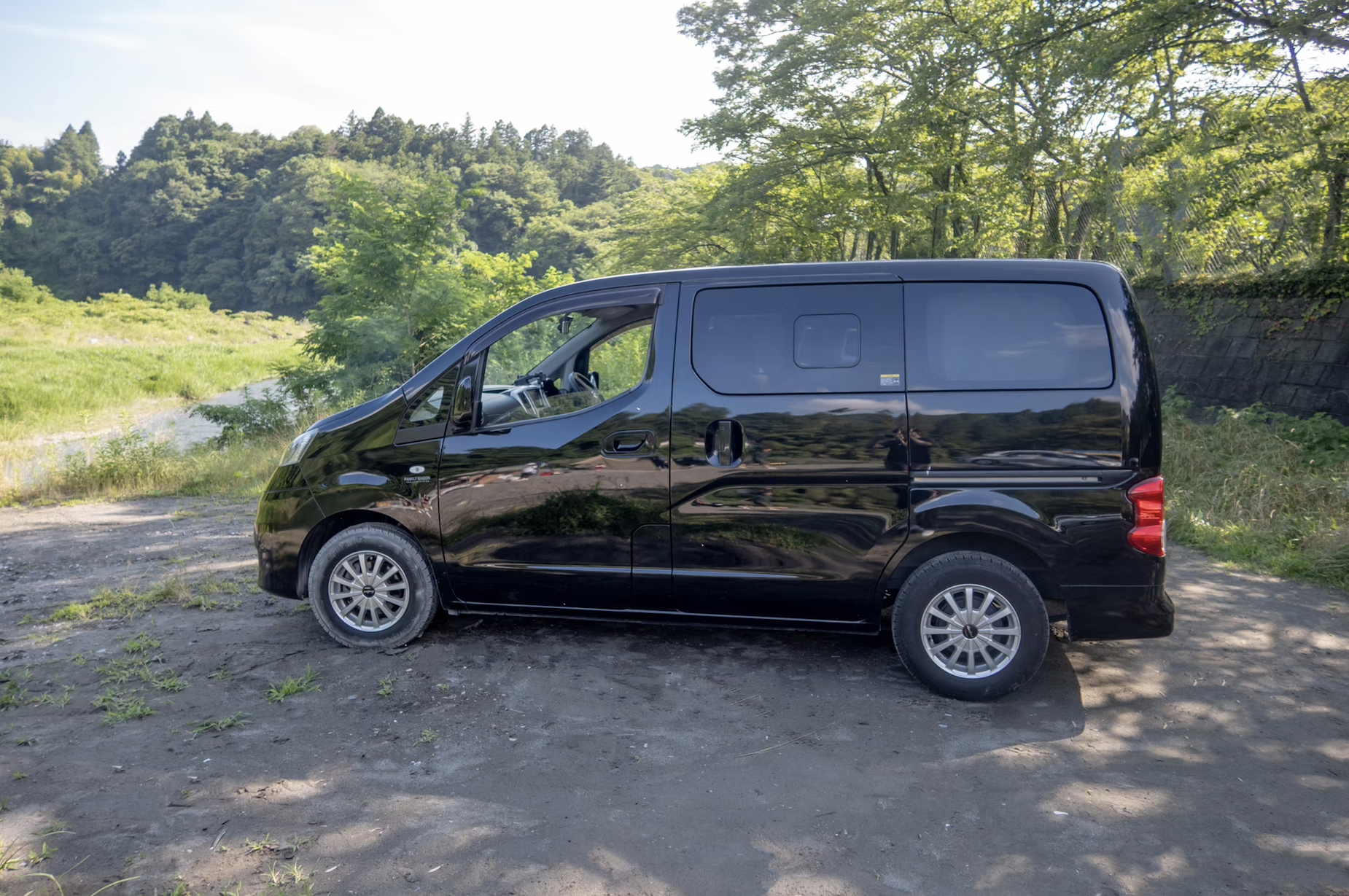
The Compass: although it can sleep up to three adults or a family of four, many couples choose it simply for the extra comfort and space. On a honeymoon road trip, the larger interior allows you to spread out, relax, and enjoy longer drives without feeling confined. The fold-flat seats and pop-up roof give it flexibility, whether you’re travelling as a couple, a family, or with a third companion. It strikes a balance: large enough to feel generous, but still compact enough to be driven confidently on rural roads.
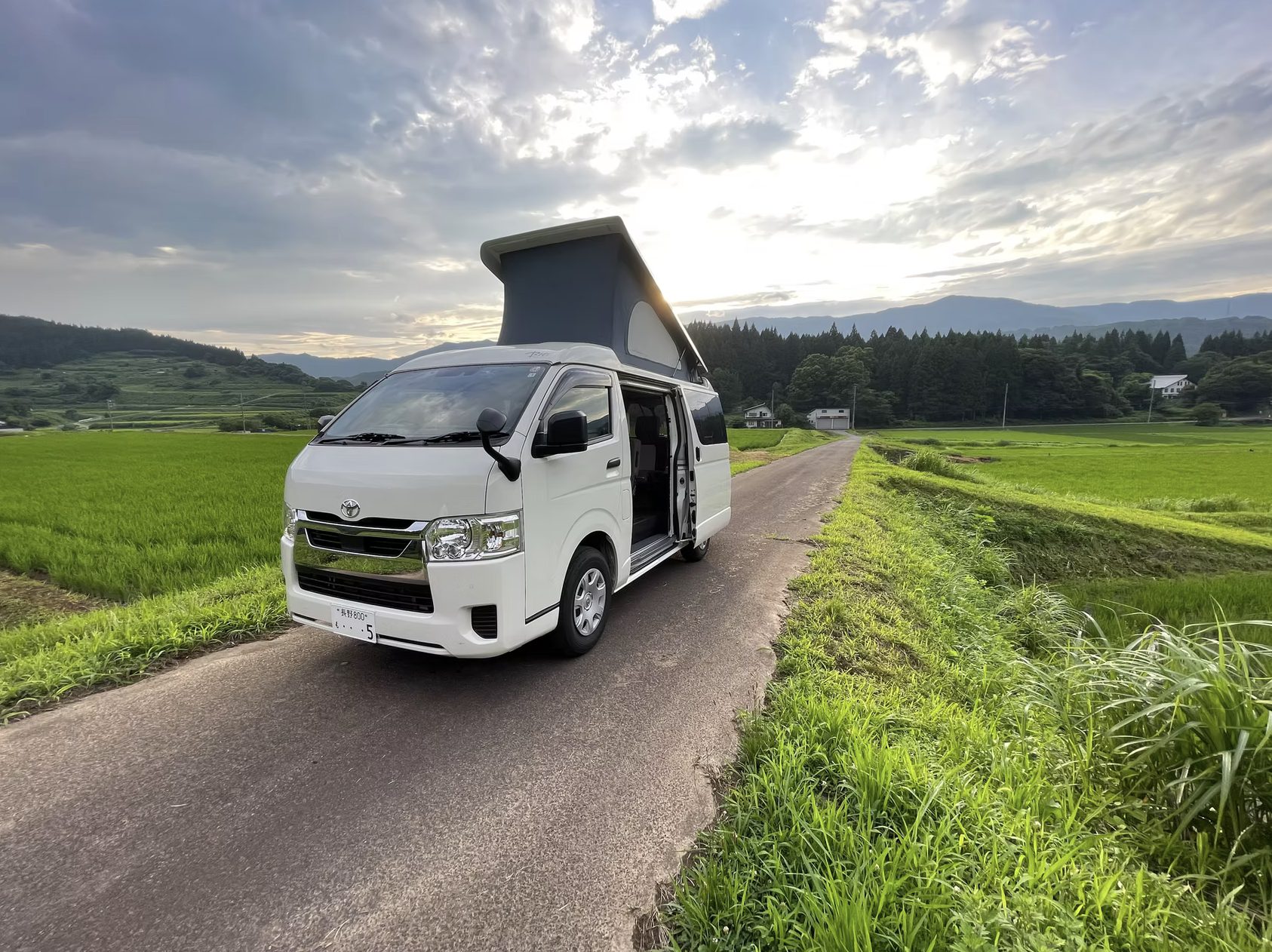
The Voyager: the most spacious of the three, and designed with groups in mind. Four friends heading through Kyūshū can comfortably travel together, cooking by the coast and sleeping side by side after a night in a hot spring town. Families with older children will appreciate the space to store extra gear, while couples who want the luxury of room to move — perhaps spending weeks on the road — will enjoy its comfort. Despite being the largest, it remains manageable to drive, and its insulation and climate control make it suitable for all seasons, from winter snowfields in Hokkaidō to the humid summers of Shikoku.
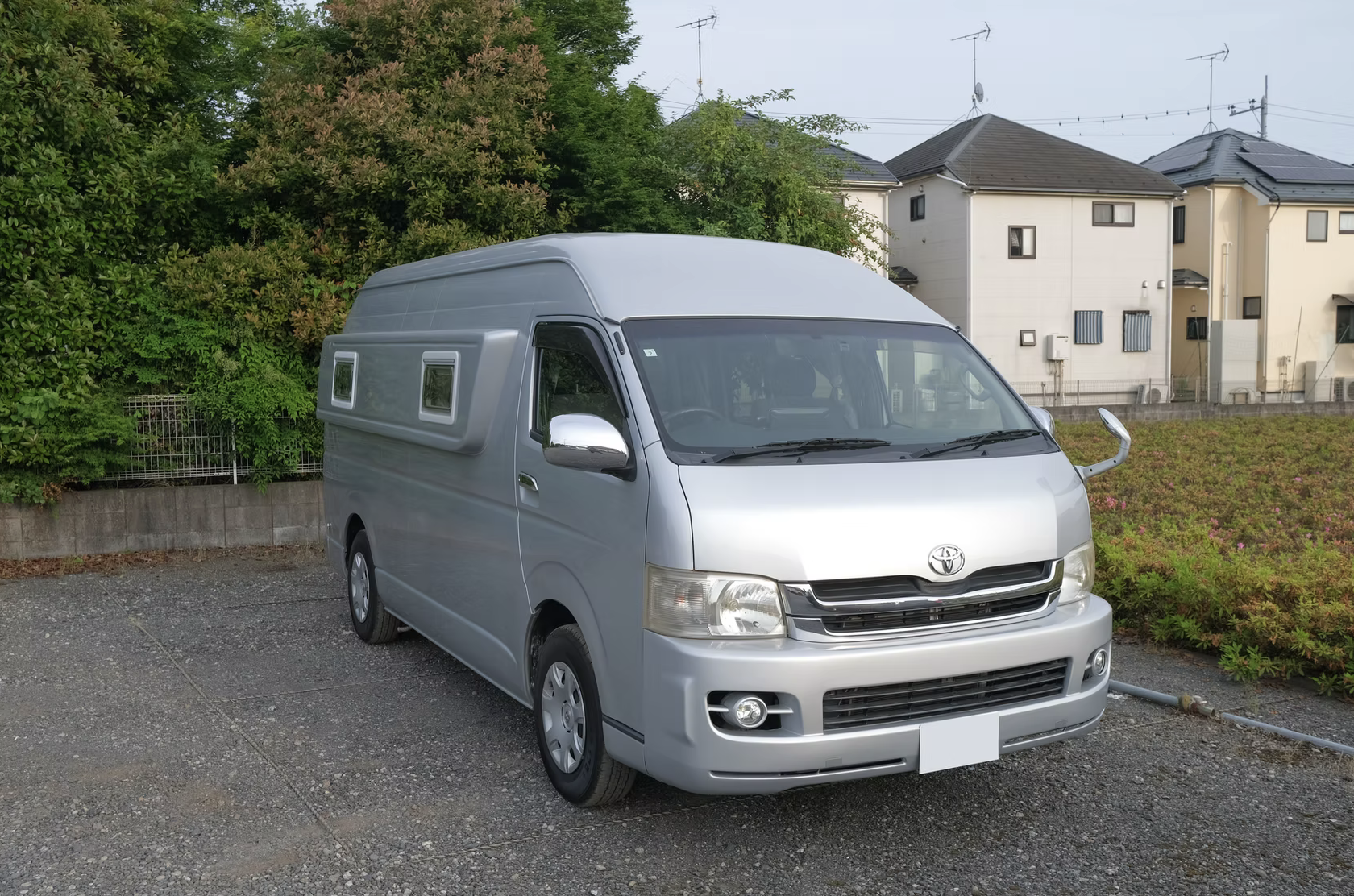
Campsites & Overnight Stays
Japan has a well-developed network of auto campsites, or auto camps, many of which provide water, power hookups, toilets, showers, and even BBQ facilities. Alongside these are the roadside stations known as michi-no-eki, where overnight parking is often allowed — though local signage should always be checked. Do note that not every site accepts vehicles; some are limited to tents only, so it’s worth confirming in advance.
Driving & Navigation
The roads are remarkably clean and well maintained, even in remote areas. Most long-distance journeys make use of toll roads and expressways, which require an ETC (electronic toll) card. Be prepared for narrow mountain routes and compact village parking; in these situations, the smaller vans are particularly helpful. Each van runs on a dual-battery system, charging while you drive. For heavier electricity use, such as the fridge, lights, or phone charging, it’s best to plug into a campsite power supply overnight.
Facilities & Comfort
On-board bathrooms and showers are rare in Japanese camper-vans. Instead, most travellers use campsite facilities, municipal baths, or public hot springs (onsen) — which become a memorable part of the journey in themselves. Heating and cooling are essential, as Japan’s climate shifts dramatically between Hokkaidō in the north and Kyūshū in the south. Stocking up on supplies is easy, thanks to the ever-present network of supermarkets and convenience stores (kombini), where fresh food, snacks, and daily necessities are always close at hand.
Privacy & Views
One of the great pleasures of camper-van travel is waking up somewhere extraordinary. You might open your curtains to a cedar forest, park by a quiet stretch of beach and fall asleep to the sound of waves, or watch the sun rise over terraced rice fields. Many campsites are generously spaced, giving a sense of privacy, and if you venture off the main routes you’ll often find peaceful places to stop with no one else in sight. Curtains and blinds in the van give you control over light and privacy when you need it.
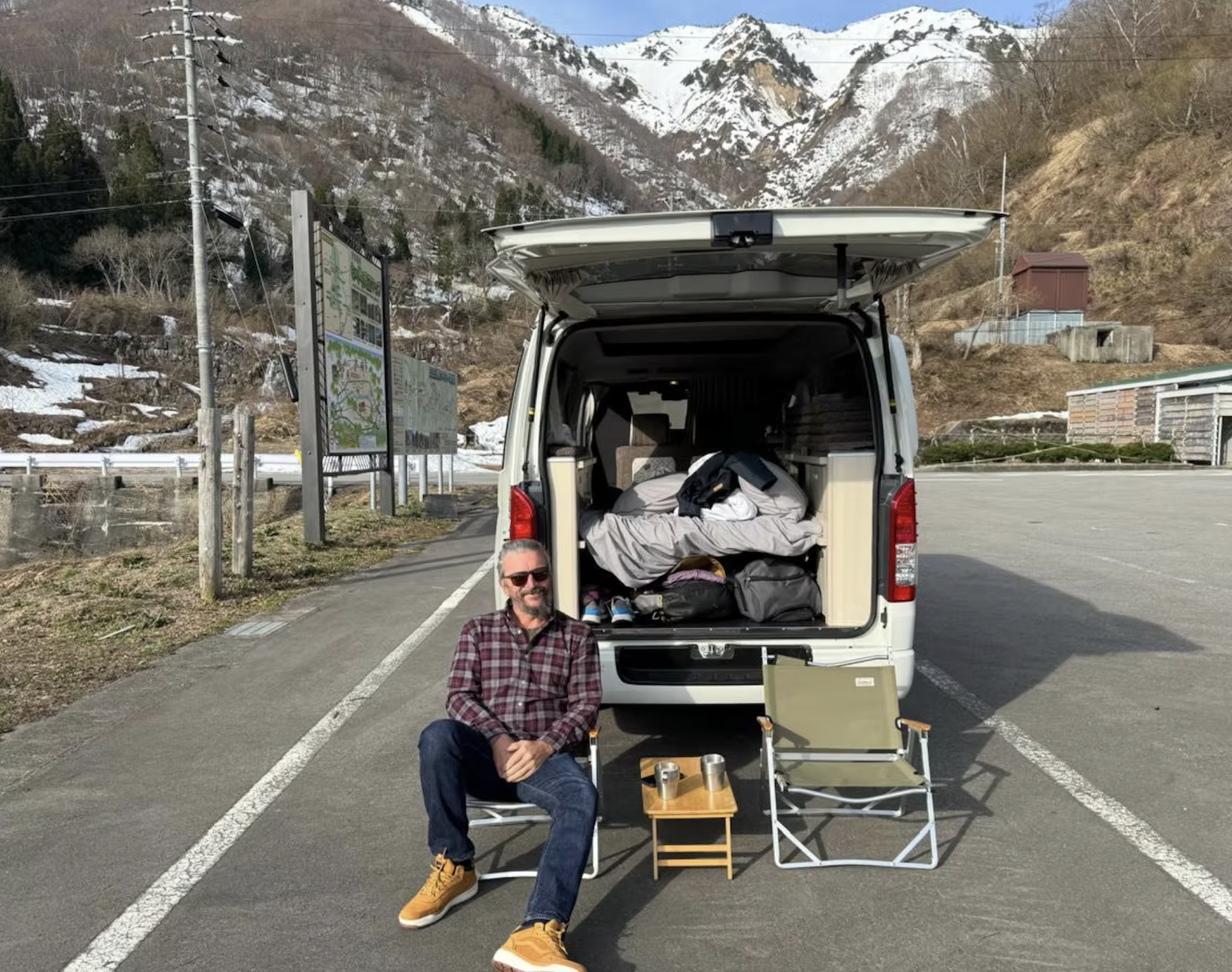
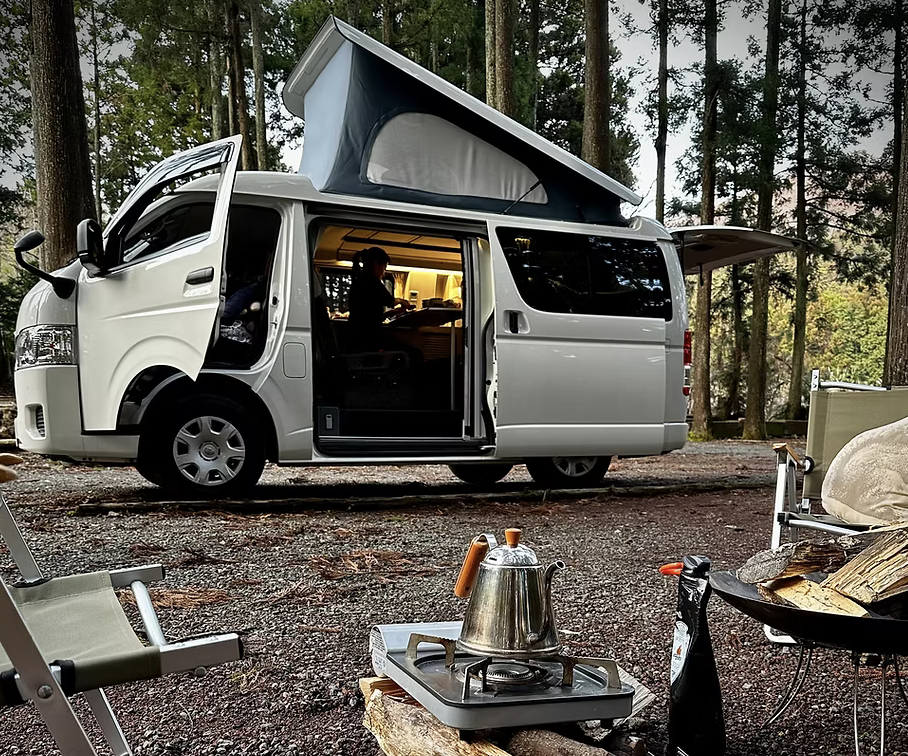
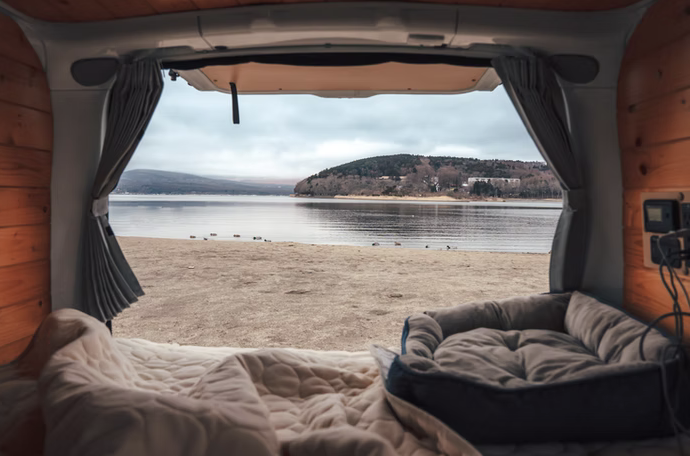
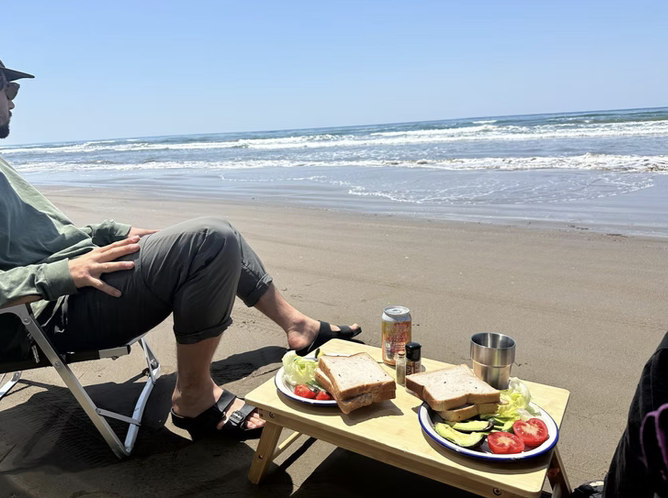
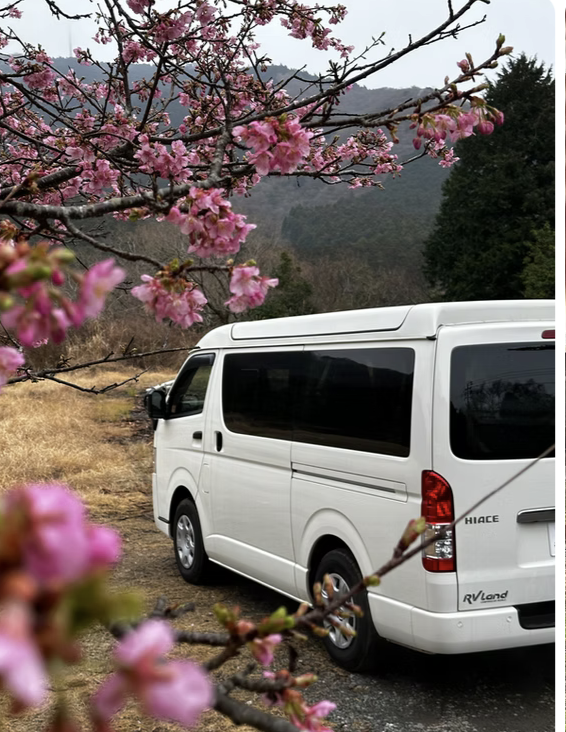
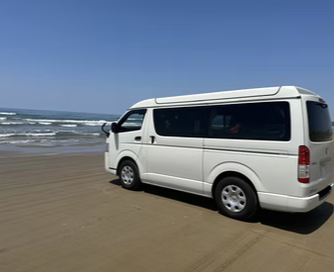
Sample Itinerary Ideas
- Hokkaidō alpine loop: start in Sapporo, drive through Daisetsuzan National Park, overnight at mountain camps, and follow the rugged coastal roads of the Shakotan Peninsula.
- Honshū east coast and inland mix: begin in Tokyo, follow the Pacific coast to Sendai, head inland to Yamadera and Zao, cross the central Tōhoku region, and descend into the hot springs of Nagano or Gifu.
- Southern Kyūshū and volcanoes: land in Fukuoka, drive south to Kagoshima, explore the volcanic island of Sakurajima, then travel north through Takachiho Gorge and Mount Aso, finishing in Kumamoto.
- Shikoku pilgrimage route: use the van to hop between temples, explore hidden valleys, and drive along quiet forest highways with stops at dramatic coastal viewpoints.
Why Choose Camper-van Travel
- Freedom: stop where you like, stay longer if you’re happy, move on if you’re not.
- Access: reach national parks, quiet coasts, and mountain areas where hotels are scarce.
- Comfort: heating, cooling, fridges, and storage make life on the road easy.
- Familiarity: left-hand driving makes the adjustment easy for UK visitors.
- Community: Japanese campsites often feel welcoming, with shared cooking areas and friendly encounters.